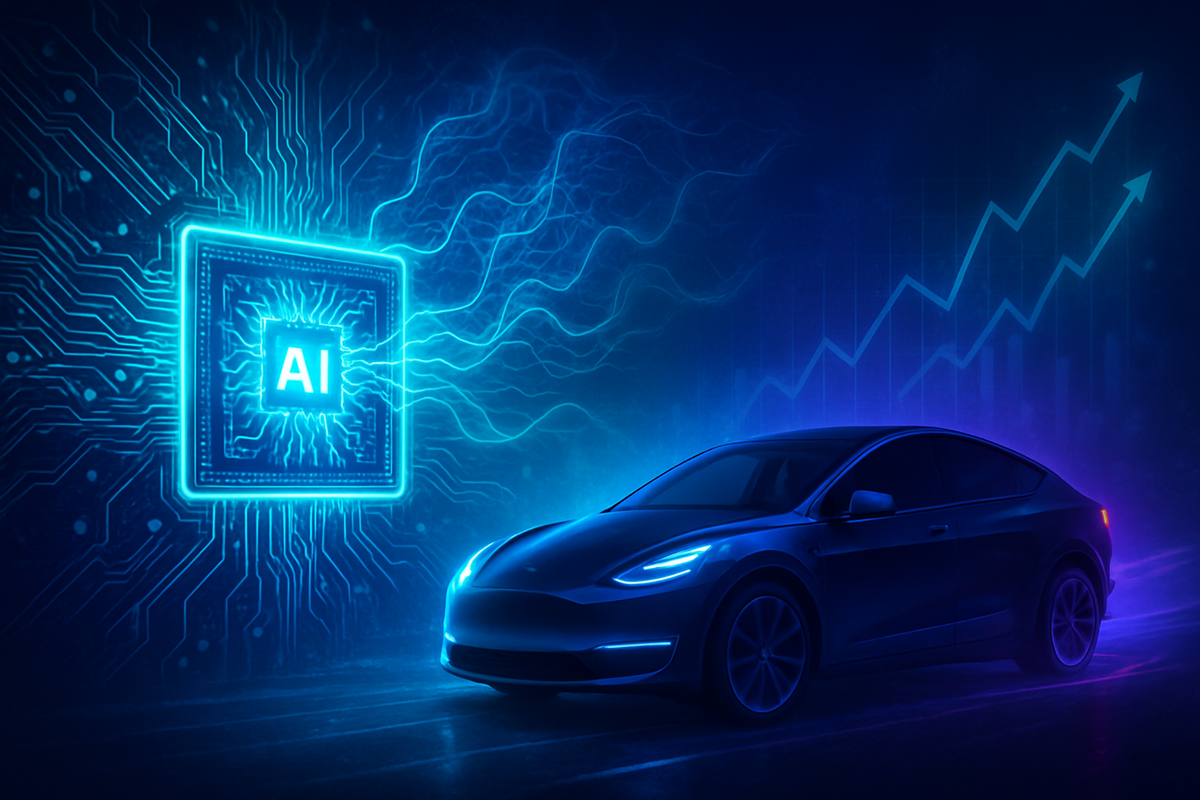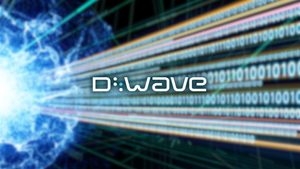
The financial markets are currently experiencing a potent cocktail of excitement and strategic realignment, driven by groundbreaking developments in artificial intelligence and electric vehicles. As of October 6, 2025, the futures markets reflect a complex global economic picture, characterized by cautious optimism tempered by underlying macroeconomic concerns. However, the dominant narratives are the monumental surge in Advanced Micro Devices (NASDAQ: AMD) shares following a transformative partnership with OpenAI, and the widespread anticipation surrounding a cryptic yet highly significant product unveiling from Tesla (NASDAQ: TSLA), slated for tomorrow. These concurrent events are not merely isolated headlines; they signal a profound reshaping of the technology and automotive sectors, promising far-reaching implications for market participants and the broader economy.
The immediate ripples of these developments are already evident. AMD's stock has soared to unprecedented highs, indicating a significant shift in the competitive landscape of AI hardware and potentially challenging long-standing market dominance. This surge injects fresh optimism into the semiconductor sector, with investors closely monitoring how this new alliance will accelerate the development of AI infrastructure. Simultaneously, Tesla's impending announcement, widely speculated to be a game-changer for the mass-market electric vehicle segment, has fueled a pre-emptive climb in its shares, underscoring the market's hunger for innovation and expansion in sustainable transportation. This confluence of strategic partnerships and product innovations underscores a period of rapid evolution, where technological breakthroughs and market accessibility are key drivers of momentum and investor sentiment.
A New Dawn for AI Hardware and Tesla's Strategic Unveil
The most striking development gripping the financial world today, October 6, 2025, is the monumental surge in Advanced Micro Devices (NASDAQ: AMD) shares. The catalyst for this dramatic rise is a strategic, multibillion-dollar partnership with OpenAI, a deal that industry analysts are already labeling as transformative. The agreement, estimated to be worth approximately $10 billion and projected to generate tens of billions in revenue for AMD over the next five years, involves OpenAI deploying 6 gigawatts of AMD Instinct GPUs to power its next-generation AI infrastructure. The initial phase of this ambitious collaboration will see a 1-gigawatt deployment of AMD Instinct MI450 GPUs commencing in the second half of 2026. This announcement sent AMD's shares rocketing by an astounding 24% to almost 38% in pre-market trading, pushing the stock to its highest levels ever and significantly boosting its year-to-date gains. Further solidifying this alliance, AMD has issued OpenAI a warrant for up to 160 million shares of its common stock, roughly 10% of the company, which will vest upon achieving specific deployment and share-price milestones.
In parallel, all eyes are turning towards Tesla (NASDAQ: TSLA) as the company gears up for a highly anticipated product unveiling scheduled for tomorrow, October 7, 2025. The EV giant has masterfully built suspense through cryptic social media teasers featuring spinning components and illuminated headlights, igniting a flurry of speculation among investors, analysts, and enthusiasts alike. The prevailing consensus points to the reveal of a new, lower-cost, stripped-down version of its popular Model Y SUV. This strategic move is widely seen as an effort to tap into a more price-sensitive customer base and to counter potential sales slowdowns following the recent expiration of U.S. federal EV tax credits. This "Model Y Standard" is expected to feature simplified styling, a smaller battery, and fewer premium features, potentially starting around $39,990 in the U.S. and boasting a 20% reduction in production costs compared to the existing Model Y.
While the affordable Model Y is the frontrunner for tomorrow's announcement, other less probable but equally exciting speculations include the unveiling of the second-generation Tesla Roadster, which has been anticipated for a 2026 launch, or significant updates on the Optimus humanoid robot project. The market's excitement is palpable, with Tesla's stock climbing in pre-market trading today in anticipation of the news. These concurrent events—AMD's strategic AI triumph and Tesla's enigmatic product reveal—underscore a period of intense innovation and strategic maneuvers within the technology and automotive sectors, signaling a dynamic shift in market focus towards advanced computing and accessible sustainable transportation.
The broader financial market sentiment, as of early October 2025, is a tapestry of cautious optimism and underlying concerns. Global stock markets, including the S&P 500 and Dow, have recently posted record closes, partly buoyed by the U.S. Federal Reserve's recent quarter-percentage-point interest rate cut, bringing rates to 4% to 4.25%. This marks the first reduction of the year, with more expected. However, this positive momentum is tempered by creeping inflation, which hit 2.9% in August, exceeding the Fed's 2% target, partly due to new reciprocal tariffs. A U.S. government shutdown, commencing October 1st, has also introduced uncertainty, though markets have largely viewed it as a short-term disruption. The futures market, while reflecting equity gains, also shows bearish sentiment in certain commodities like UK feed wheat and ferrous scrap, indicating a nuanced economic outlook.
Shifting Fortunes: Winners and Losers in the AI and EV Race
The landscape of both the artificial intelligence hardware and electric vehicle markets is poised for a significant realignment following the recent announcements. The strategic partnership between Advanced Micro Devices (NASDAQ: AMD) and OpenAI is set to create a new hierarchy in the AI chip sector, while Tesla’s (NASDAQ: TSLA) anticipated product reveals are crucial for its continued dominance and for shaping the competitive strategies of legacy automakers and emerging EV players. These developments will undoubtedly carve out clear winners and losers, influencing market share, revenue streams, and long-term competitive positioning.
Advanced Micro Devices (NASDAQ: AMD) emerges as a clear frontrunner in the AI hardware race. The multi-year deal with OpenAI, valued at an estimated $10 billion and projected to generate tens of billions in revenue over the next five years, is expected to be highly accretive to AMD’s non-GAAP earnings per share. This partnership, which includes OpenAI deploying 6 gigawatts of AMD Instinct GPUs, particularly the MI450 series starting in late 2026, marks a pivotal moment for AMD. It positions the company to rapidly gain significant traction in the data center and enterprise AI segments, directly challenging the long-standing dominance of NVIDIA (NASDAQ: NVDA). The inclusion of a warrant for up to 160 million shares of AMD common stock for OpenAI, contingent on deployment and share-price milestones, further solidifies a deep, multi-generational collaboration, validating AMD's Instinct GPU roadmap and its ROCm software ecosystem as a formidable alternative to NVIDIA’s CUDA platform.
Conversely, NVIDIA (NASDAQ: NVDA), while still holding over 80% market share in deep learning GPUs, faces a direct competitive challenge. The AMD-OpenAI deal, though OpenAI also maintains a supply agreement with NVIDIA, signals a diversification of AI infrastructure investments that could lead to a gradual erosion of NVIDIA's market share in future large-scale deployments. NVIDIA’s stock experienced a slight dip following the news, underscoring investor recognition of the intensifying competition. To maintain its leadership, NVIDIA will be compelled to further innovate and strengthen its robust CUDA software ecosystem against AMD's rapidly improving hardware and system-level offerings. For Intel (NASDAQ: INTC), the news is less favorable. Despite its active pivot towards AI with Gaudi accelerators and Xeon Scalable processors, Intel lags behind both NVIDIA and AMD in high-end AI training applications. The AMD-OpenAI deal solidifies AMD's position as the primary challenger, making it even more challenging for Intel to capture substantial market share in the lucrative large-scale AI infrastructure market.
In the electric vehicle arena, Tesla (NASDAQ: TSLA) is strategically maneuvering to reclaim and expand its market share, which had declined from over 70% in Q1 2022 to 38% by August 2025. The anticipated unveiling of a more affordable Model Y tomorrow, October 7, 2025, along with the earlier refresh of the Model Y ("Juniper") and plans for a mass-market, lower-cost car in the first half of 2025, are critical initiatives. These models are designed to boost sales volume, appeal to a broader consumer base, and sustain robust demand for Tesla’s best-selling SUV. While aggressive pricing might initially compress margins, the long-term revenue growth from increased adoption is substantial, with analysts projecting 1.85 million deliveries in 2025, significantly aided by new affordable models.
For legacy automakers like Ford (NYSE: F) and General Motors (NYSE: GM), Tesla’s aggressive pricing and new affordable offerings will intensify competition in the mainstream EV segments they are targeting. Ford, despite electrifying popular models like the Mustang Mach-E and F-150 Lightning, faces pressure on its EV pricing and profitability, especially given its EV division reported a $4.7 billion loss in 2023. GM, whose EV sales surged by 50% in 2024, aims for one million units by the end of 2025, leveraging its Ultium platform. However, a more affordable Model Y will directly compete with models like the Equinox EV, necessitating GM's continued focus on cost reduction and product diversification to sustain its growth. Rivian (NASDAQ: RIVN), which targets the premium electric truck and SUV markets, might not face direct competition from a lower-cost Model Y in its niche. However, the overall intensification of the EV market and Tesla's aggressive pricing could influence consumer perception of value across the entire EV spectrum, potentially drawing away buyers who might consider Rivian’s upcoming R2 compact SUV. The expiration of the $7,500 federal EV tax credit further complicates the landscape for all players, compelling continuous innovation and cost efficiency.
A Glimpse into the Future: Reshaping Industries and Accelerating Innovation
The strategic alliance between Advanced Micro Devices (NASDAQ: AMD) and OpenAI, coupled with Tesla’s (NASDAQ: TSLA) imminent product unveiling, are not isolated events but rather powerful accelerants within broader industry trends that are fundamentally reshaping the technological and economic landscape. Occurring in early October 2025, these developments underscore a period of profound transformation in artificial intelligence, semiconductors, and electric vehicles, promising both intensified competition and unprecedented innovation.
The AMD-OpenAI partnership, which sees OpenAI deploying 6 gigawatts of AMD Instinct GPUs for its next-generation AI infrastructure, is a seismic shift in the AI and semiconductor industries. It directly challenges NVIDIA’s (NASDAQ: NVDA) long-held dominance in AI chips, fostering a more competitive environment crucial for innovation. This collaboration highlights the "insatiable demand" for AI computing power, a trend that has rapidly driven AI-related sales to over 25% of the total semiconductor market in 2025. The deal's innovative structure, including a warrant for 160 million AMD shares for OpenAI, aligns the strategic interests of both companies, potentially ushering in a new era of deeper integration between hardware suppliers and pioneering AI developers. This echoes historical collaborations where strategic alliances defined new technological eras, fostering sustained innovation by tightly linking the success of hardware and software.
For the electric vehicle market, Tesla’s anticipated reveal of a more affordable Model Y tomorrow, October 7, 2025, fits squarely into the growing trend of making EVs more accessible and addressing intensifying competition. Tesla faces increasing pressure from both traditional automakers like General Motors (NYSE: GM) and Ford (NYSE: F), and especially from aggressive Chinese EV manufacturers such as BYD, which have recently surpassed Tesla in sales volume in several quarters. The push for a lower-cost Model Y is a direct response to the broader industry goal of achieving mass EV adoption, particularly as government incentives, like the recently expired U.S. federal EV tax credit, phase out. This move by Tesla is akin to historical precedents set by industry pioneers, such as Henry Ford with the Model T, in democratizing access to groundbreaking technology.
The ripple effects of these events are far-reaching. In the AI sector, heightened competition will likely spur greater innovation, potentially leading to better pricing and technological differentiation across the AI chip industry, benefiting consumers and businesses alike. Other major AI developers and cloud providers might be encouraged to diversify their hardware suppliers, moving away from single-vendor reliance. In the EV market, a more affordable Model Y could ignite a price war, forcing competitors to accelerate their own cost-reduction strategies and the development of competitively priced EV models. Companies unable to adapt quickly to this new pricing dynamic may struggle to maintain market share or profitability.
Regulatory and policy implications are also significant. The sheer scale of AI infrastructure build-outs and the rapid expansion of AI capabilities could attract increased scrutiny regarding market concentration, antitrust concerns, and the massive energy consumption of AI data centers. Governments worldwide are already grappling with how to regulate AI responsibly, addressing concerns about data privacy, ethical AI development, and potential market dominance. For EVs, the timing of Tesla's announcement, coinciding with the end of the federal EV tax credit, underscores the profound impact of government policies on consumer demand and market volatility. Furthermore, regulatory bodies continue to scrutinize autonomous driving features, which could lead to tighter industry-wide regulations for self-driving technology and ethical considerations surrounding AI initiatives like Tesla's Optimus robot.
The Road Ahead: Navigating Opportunities and Challenges in a Dynamic Market
The recent seismic shifts in the financial landscape—AMD’s (NASDAQ: AMD) groundbreaking deal with OpenAI and Tesla’s (NASDAQ: TSLA) impending announcement—set the stage for a period of both significant opportunity and considerable challenge across the technology and broader futures markets. As of October 6, 2025, investors and industry players are keenly watching for the short-term market reactions and long-term strategic realignments that will define the coming years.
In the short term, Advanced Micro Devices (NASDAQ: AMD) is poised for substantial revenue growth, primarily driven by its AI accelerators. The OpenAI partnership, expected to generate tens of billions in revenue, is a critical strategic pivot that significantly strengthens AMD’s competitive stance against NVIDIA (NASDAQ: NVDA). This immediate impact was reflected in AMD's stock surging over 35% in pre-market trading on the news. Analysts project a cautious optimism, with an average price target around $187.32, indicating potential upside. Further strategic pivots, such as exploring manufacturing with Intel Foundry Services (IFS), could diversify its supply chain and reduce reliance on TSMC, adding another layer of resilience. However, AMD must contend with NVIDIA's entrenched software ecosystem and the high capital expenditure required for continuous R&D in the fiercely competitive semiconductor space.
For Tesla (NASDAQ: TSLA), the short-term focus centers on the anticipated unveiling of a more affordable Model Y tomorrow, October 7, 2025. This move is a crucial strategic pivot to sustain sales momentum following the expiration of federal EV tax credits and to broaden its market appeal. The company's ongoing investment in Full Self-Driving (FSD) and AI initiatives remains vital for unlocking new revenue streams and redefining mobility through robotaxis and subscription models. While Tesla's stock has seen some pre-announcement climbing, analysts currently hold a "Hold" consensus rating, with an average price target of $334.54 against its current price of $429.83, reflecting concerns about demand post-tax credit and intense competition. The success of this affordable Model Y launch will be a key determinant of its performance in the coming months.
Looking further ahead, AMD's long-term trajectory is firmly centered on becoming a core strategic compute partner for major AI developers, with continued investment in its open-source ROCm platform and chiplet architecture. Bullish long-term forecasts predict AMD could reach highs of $391.67, with revenue nearing $60 billion by 2028, largely propelled by AI acceleration. The multi-year, multi-generation agreement with OpenAI provides long-term revenue and technical validation, cementing AMD's position as a significant growth story in AI infrastructure. Tesla’s long-term vision involves transforming into an AI and energy company, with its automotive division serving as a crucial component of an autonomous mobility ecosystem. The expansion of FSD, introduction of new affordable models, and the ramp-up of Cybertruck and Tesla Semi are expected to open new revenue streams. Optimistic forecasts see Tesla shares potentially reaching $1,283.00 by 2030, driven by AI-powered mobility and energy storage solutions. However, both companies face ongoing challenges, including intense competition, the need for substantial R&D investments, and navigating complex regulatory landscapes.
The futures market, reflecting a global economy showing signs of slowing, anticipates a nuanced landscape. In the short term (Q4 2025 - 2026), a granular approach to investment and hedging strategies will be crucial. Expectations of further Federal Reserve interest rate cuts in October and December 2025 are likely to support a bullish trend in U.S. equities, with the S&P 500 potentially reaching 6,000 by year-end. Conversely, a broad softening of commodity prices is expected due to slowing global growth, with Brent crude oil potentially falling to $60 a barrel. However, specific opportunities exist in gold, silver, palladium, and natural gas, which are projected to see bullish trends. Long-term, sustained lower interest rates and continued investment in the "new economy" driven by AI are expected to support equity markets. The bull market for precious metals is anticipated to broaden and eventually shift into energy transition minerals like copper and aluminum. Challenges include the potential for a global economic slowdown, supply-demand imbalances in the rapidly expanding AI sector, and lingering policy uncertainty. The market will continue to be characterized by diverging trends across various asset classes, necessitating adaptable and informed investment strategies.
Navigating a Transformed Market: Key Takeaways and Investor Outlook
The financial landscape as of October 6, 2025, is defined by a dynamic interplay of technological advancement, strategic corporate maneuvers, and evolving macroeconomic conditions. The confluence of AMD’s (NASDAQ: AMD) groundbreaking partnership with OpenAI, Tesla’s (NASDAQ: TSLA) strategic push for mass-market EVs and autonomous driving, and a complex futures market outlook paints a picture of both immense opportunity and significant challenges.
Key Takeaways: The AMD-OpenAI deal represents a pivotal moment in the AI industry, challenging NVIDIA’s (NASDAQ: NVDA) dominance and ensuring continued rapid innovation through a diversified hardware supply chain. This partnership, which includes OpenAI deploying 6 gigawatts of AMD Instinct GPUs and receiving share warrants, is set to generate tens of billions in revenue for AMD and accelerate the build-out of next-generation AI infrastructure. Tesla's anticipated unveiling of a more affordable Model Y tomorrow, October 7, 2025, is a crucial strategic pivot to expand its market reach and sustain sales momentum in an increasingly competitive EV landscape, especially after the expiration of federal EV tax credits. The company’s continued heavy investment in Full Self-Driving (FSD) and robotaxi services underscores its long-term vision to redefine mobility. Meanwhile, the futures market reflects cautious optimism, driven by anticipated Federal Reserve rate cuts and strong corporate earnings, yet tempered by persistent inflation concerns and geopolitical uncertainties. Equity markets are near all-time highs, while commodity prices show mixed signals, with some softening due to global economic slowdowns, but strong performance in precious metals.
Assessment of the Market Moving Forward: The market is currently treading a delicate balance. AI is firmly established as a core driver of growth, fostering competition and innovation within the semiconductor sector. Tesla's strategic re-positioning towards more affordable models and autonomous services aims to reignite volume growth and reinforce its leadership in the EV and future mobility sectors. The Federal Reserve's cautious easing cycle suggests a belief in manageable inflation, but the persistence of elevated CPI figures and geopolitical risks could introduce volatility. While the overall U.S. equity market may appear slightly premium, specific sectors and asset classes offer potential value. The lasting impact will likely be a more competitive and resilient AI hardware market, accelerated global EV adoption driven by increased accessibility, and a continued emphasis on AI-driven productivity gains to offset inflationary pressures. The market will remain highly sensitive to central bank policies, inflation data, and geopolitical stability.
Final Thoughts on Significance and Lasting Impact: These developments are not merely transient market events; they represent fundamental shifts in how technology is developed, deployed, and consumed. The AMD-OpenAI alliance is a testament to the insatiable demand for AI compute and the strategic importance of diversifying hardware supply. Tesla's continuous innovation, particularly in making EVs more accessible and advancing autonomous capabilities, will continue to shape the future of transportation. Together, these events underscore an era where technological breakthroughs are rapidly translated into market opportunities, driving both economic growth and societal change. The interconnectedness of these trends means their lasting impact will be felt across industries, influencing everything from supply chains and energy consumption to labor markets and regulatory frameworks.
What Investors Should Watch For in Coming Months:
- AMD's Execution and OpenAI's Deployment: Monitor AMD's progress in fulfilling its commitments to OpenAI, particularly the initial deployment of MI450 chips in the second half of 2026. Pay close attention to revenue generation updates and the vesting of OpenAI's share warrants will be crucial.
- Tesla's New Model Performance and FSD Milestones: Closely observe the market's reaction to the new affordable Model Y, its sales performance, and the production ramp-up. Further updates on robotaxi pilot programs and the expansion of FSD capabilities in new regions will significantly influence Tesla's valuation. The Q3 2025 earnings call on October 22nd will offer vital financial insights.
- Federal Reserve's Monetary Policy: Pay close attention to upcoming Federal Reserve meetings, particularly in October and December, for further interest rate decisions. Any divergence from market expectations regarding rate cuts or shifts in the Fed's inflation outlook will be market-moving.
- Inflation and Economic Data: With a U.S. government shutdown potentially impacting official data, carefully track alternative economic indicators and inflation metrics (CPI, PCE) for clearer signals on economic health.
- Geopolitical Developments and Trade Policy: The resolution of the ongoing U.S. government shutdown and any developments in international trade negotiations, including potential new tariffs, remain significant wildcards that could impact market stability.
- Q4 2025 Corporate Earnings: Monitor corporate earnings reports, especially from the technology and AI sectors, to gauge the continued strength of corporate fundamentals and the impact of AI investments.
- Sectoral Opportunities: Consider opportunities in potentially undervalued sectors such as small-cap and value stocks, real estate, energy, and healthcare, which may offer resilience and growth in a market that is largely trading at a premium. Gold's performance as a safe haven and inflation hedge also warrants attention.
This content is intended for informational purposes only and is not financial advice.






